13 The Orders of Insects: Non-insect Hexapods
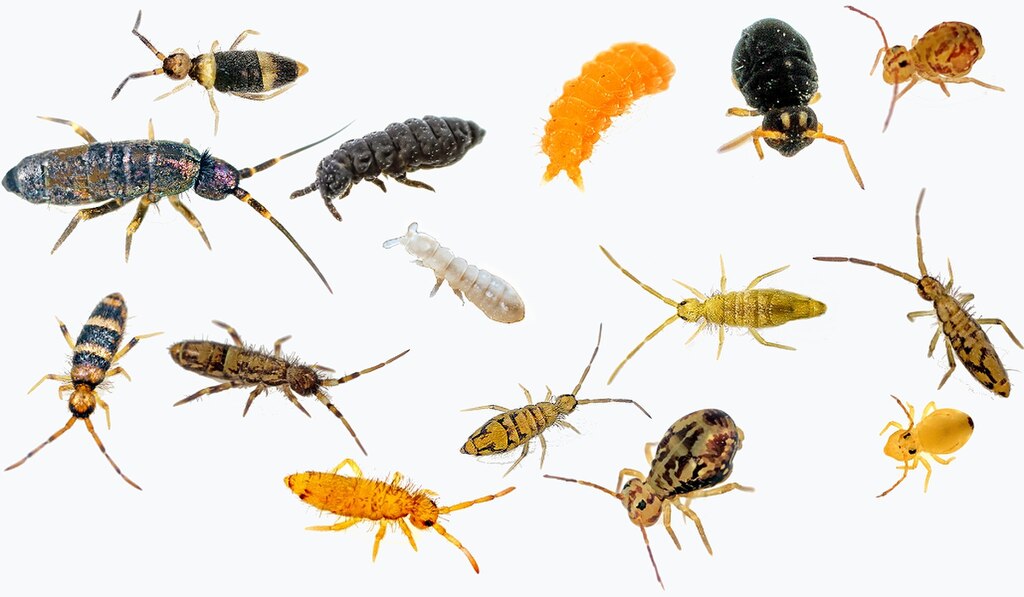

Order Protura (Class Entognatha)
Order Protura
- no common name
- Greek, protos = first; oura = tail
- 500 species worldwide, about 30 species in Australia
- unknown until early 1900s
- worldwide distribution
- inhabit loose, moist soil, leaf litter; under bark, in thick moss, in decomposing logs, especially rich in humus
- observed feeding on fungal hyphae
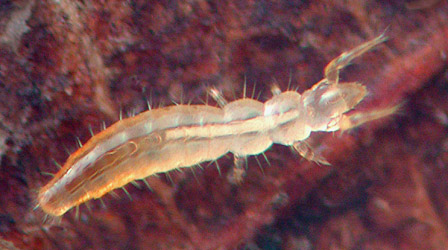
Characteristics of Protura
Adults
- Very small (<2mm), elongate, cylindrical body, usually without much pigmentation
- Head conical, no eyes or antennae
- Entognathous: mouthparts are enclosed within folds of the head, except when feeding
- Wingless
- Fore legs held forward; not used for walking but for sensory functions in the absence of antennae
- Abdomen has 12-segments; no cerci
Immatures
- resemble adults but with fewer abdominal segments
Class Collembola
Class Collembola
- common name: springtails (refers to jumping mechanism on abdominal sterna 3 & 4, however a few Collembola lack this device)
- scientific name refers to tubular appendage on the first abdominal sternum which secretes a sticky substance – (Greek, kolla = glue; embolon = peg).
- worldwide distribution of about 9000 species; estimated that Australia has about 2000 species but only 1630 described
- very abundant in leaf litter and soil
- most species feed in moist habitats primarily on micro-organisms such as fungi, bacteria, algae, yeasts and pollen
- found in various habitats e.g. soil and leaf litter, marine littoral zone, surface of snow and water, termite colonies
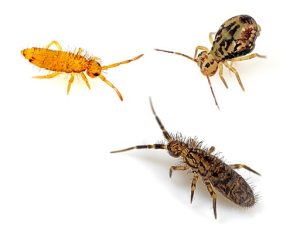
Characteristics of Collembola
Adults
- Small, soft-bodied, usually <3mm but some species up to 10mm; different body shapes; come in a variety of colours
- simple eyes made up of ocelli; mouthparts entognathous; antennae moniliform
- wingless; thoracic segments like those of abdomen, legs four-segmented
- abdomen six-segmented with sucker-like ventral tube (collophore) that has eversible sac-like vesicles for absorbing water from the substrate, in some species it has an adhesive function; without cerci
- forked tail-like springing structure (furca) held under the abdomen aids with jumping in many species
Immatures
- Resemble small adults, with constant segment number
Functions of the collophore:
- osmoregulation in some species
- adhesion after jumping in other species
- plays a role in ion transport, excretion, respiration
- may provide legs with a lubricant for grooming
- plays a role in uptake of water from substrate
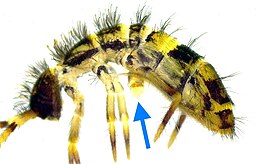
Order Diplura (Class Entognatha)
Order Diplura
- no common name
- Greek, diploos = two; oura = tail
- consisting of about 1000 species worldwide; about 30 species described from Australia
- found under leaves, stones, etc. or in loose, moist soil in wetter forests and locations
- little know about their biology but sometimes found in small groups; a few records associate diplurans with ants and termites
- generally omnivorous feeding on soil micro-organisms, but some predacious (those with modified cerci)
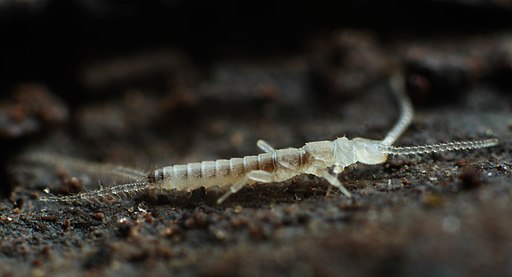
Characters of Diplura
Adults
- Most are small <5mm, but some get quite large up to 50mm; narrow-bodied
- No eyes, entognathous; antennae are moniliform
- wingless, thoracic segments like those of abdomen, legs five-segmented
- abdomen 10 segmented, sometimes with small protrusions
- two abdominal cerci often long & filiform, but sometimes more sclerotised & forceps-like, used for grasping prey
Immatures
- Resemble small adult, with constant segment number
Activity
Watch this video on Collembola locomotion.
Topic Review
Do you know…?
- the names of the three groups of non-insect hexapods
- the special features of each group

